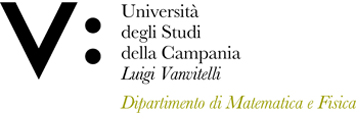Francesco MAZZOCCA
Insegnamento di GEOMETRIA COMBINATORIA
Corso di laurea magistrale in MATEMATICA
SSD: MAT/03
CFU: 8,00
ORE PER UNITÀ DIDATTICA: 64,00
Periodo di Erogazione: Secondo Semestre
Italiano
| Lingua di insegnamento | ITALIANO |
| Contenuti | L'insegnamento ha l’obiettivo di fornire una prima introduzione alla teoria dei campi finiti, alle varietà algebriche su campi finiti e allo studio di alcune strutture geometriche finite, con particolare riguardo alle loro proprietà algebriche e combinatorie caratteristiche. |
| Testi di riferimento | - Cameron P. J., van Lint J.H.: Designs, graphs, codes and their links, London Mathematical Society, Student Texts 22, 1991. QMW Math Notes 13. |
| Obiettivi formativi | Conoscenza e capacità di comprensione: |
| Prerequisiti | Elementi di teoria dei campi e dell’anello dei polinomi a coefficienti in un campo in una o più variabili. Nozioni fondamentali di geometria affine e proiettiva. E’ consigliabile aver sostenuto o almeno seguito l’insegnamento della laurea Magistrale Algebra Commutativa. |
| Metodologie didattiche | L'insegnamento si articola in 64 ore (8 CFU) di didattica frontale. Nell’ultima |
| Metodi di valutazione | La prova orale consiste in: |
| Programma del corso | Richiami e argomenti preliminari. |
English
| Teaching language | Italian |
| Contents | Introduction to the study of finite geometric structures, with special attention to their characteristic properties of algebraic and combinatorial type. |
| Textbook and course materials | - Cameron P. J., van Lint J.H.: Designs, graphs, codes and their links, London Mathematical Society, Student Texts 22, 1991. QMW Math Notes 13. |
| Course objectives | Knowledge and understanding. Introduction to the study of finite geometric structures, with special attention to their characteristic properties of algebraic and combinatorial type. |
| Prerequisites | Vector spaces and linear algebra. Quadratic forms. Foundamentals of teories of groups, rings and fields. Foundamentals of affine and projective geometry. |
| Teaching methods | Lectures and classes for 64 hours. In the last part of the course seminars can be proposed to students in order to deepen some topics. |
| Evaluation methods | Oral examination. Final mark will depend on the weighted average between oral examination on topics treated during lectures and eventual seminars. |
| Course Syllabus | Algebraic and geometric foundations. Fields. Rings of polynomials of one variable with coefficients in a field. Field theory: algebraic elements, simple extensions, algebraic extensions, splitting field of a polynomial. Projective spaces over a field. Finite projective and affine planes. |








